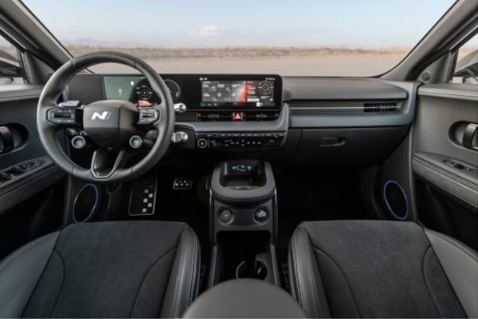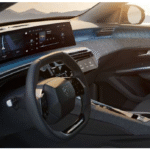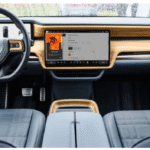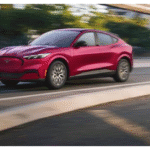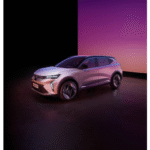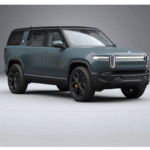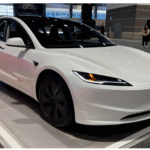Electric cars are everywhere now. If you look around in your neighbor’s garage or check out your cousin’s new car collection, you may find an electric car. If you’re not living under a rock, you might be inquisitive about how electric cars get charged.Because, let’s be real – the concept of charging an electric car still looks futuristic.
In truth, once you get the hang of it, charging an electric vehicle (EV) is actually pretty simple. Think of it like plugging in your phone—except your car’s bigger, more expensive, and takes up the driveway.
So, if you’ve ever asked, “How do you charge an electric car, anyway?” — you’re in the right place. We’ll walk through it all without any technical mumbo-jumbo. Promise.
What Happens When You Charge an EV?
Let’s break it down.
When you plug in the charger of an electric car, you’re basically transferring electricity to your car’s battery just like you charge a power bank. This electricity is stored in the electric vehicle’s battery pack which can then power the motor in use.
No gas. No fumes. No oil changes.
You just plug it in, juice it up, and off you go.
The cool part? You can do it at home, at the grocery store, or even on a road trip pit stop. And depending on how and where you charge, it might take anywhere from 30 minutes to overnight.
The Basics: Different Ways to Charge Your Electric Car
Now, there are a few different “levels” of charging, and yes, it sounds a little techy—but it’s honestly not hard to understand.
The simple version to charge an electric vehicle is:
Level 1 Charging: The Slow and Steady Option
This is literally just plugging your car into a regular home outlet. Yup, the same one you’d use for your toaster.
- Speed: Very slow—about 3 to 5 miles of range per hour
- Best for: Folks who don’t drive much and have time to let it charge overnight (or longer)
Honestly, it works, but it’s not for the impatient.
Level 2 Charging: The Everyday Hero
This is the one most EV owners install at home. It uses a 240V outlet, like the kind your dryer plugs into.
- Speed: 20 to 40 miles of range per hour (much better)
- Best for: Daily use, overnight top-ups, or charging while you’re at work
Level 2 chargers are also what you’ll find at most public charging stations—like the ones in mall parking lots or office garages.
Level 3 Charging: The Speed Demon (a.k.a. DC Fast Charging)
Now we’re talking about serious power. Level 3 chargers skip the slow stuff and send energy straight into your EV’s battery, fast.
- Speed: 80% charge in about 30 minutes
- Best for: Road trips, quick top-ups, or “Oh no, I forgot to charge last night” situations
Tesla’s Superchargers fall into this category, and other networks like Electrify America or EVgo have these popping up along highways.
Where Can You Charge an Electric Car?
Now that we have the basics covered, the question arises, where to charge the batteries?. Because a frisson of fear might cross your mind if you’re thinking about relying on an electric station instead of a gas one. The answer is yes and no. Let’s find out why.
1. Charging at Home: The Everyday Lifesaver
Most electric car owners do around 80–90% of their charging at home. It’s just convenient. You reach home, park in your garage, plug in the charger, and by morning, your car’s ready to cruise. It’s like charging your phone overnight, except your phone doesn’t weigh as heavy as an electric vehicle.
If you get a Level 2 charger installed at your home (electric vehicle manufacturers will help you with that), you’ll be able to fully charge most electric vehicles in 6–10 hours. Perfect for overnight charging.
And yes, you’ll see a bump in your electricity bill—but remember, you’re not buying gas anymore. For most folks, it still ends up cheaper per mile.
2. Charging at Work: Power While You’re on the Clock
Some companies are ahead of the game and offer free or low-cost charging at the office. If your workplace has chargers, that’s a win. You can plug in when you arrive, work your 9–5, and walk out to a full battery.
Just don’t be that person who leaves their car plugged in all day in a busy spot. EV etiquette is a thing!
3. Public Charging Stations: Your On-the-Go Backup Plan
Out running errands? Need a top-up during a weekend getaway? Public charging stations have got your back. They’re being established everywhere—from grocery store parking lots to gas station chains, to offer as much convenience as the presence of gas stations.
Apps like PlugShare, ChargePoint, or even Google Maps can help you find the nearest spot. Many of these chargers are Level 2, but you’ll also find fast chargers if you’re lucky because mostly fast chargers are installed on Highway routes.
And yes, some stations charge a fee. Others are free. It varies by location, kind of like Wi-Fi.
4. Fast Chargers on Highways: EV Road Trip Ready
If you’re planning to take a visit to another city or enjoy the road-trip staycation, you’ll want access to Direct Current (DC) fast chargers. These are built for long drives and quick stops.
Tesla owners have it easy with the Supercharger network, which is huge and super reliable. For everyone else, Electrify America, EVgo, and a few other networks are rapidly expanding their coverage.
The best part? Many newer EVs support really fast charging speeds, so you can grab a coffee or get some refreshment, freshen up and stretch your legs, and hit the road again in about 30 minutes.
Charging Times: How Long Does It Really Take?
A million-dollar question: “How long does it take to charge an electric car?”
Well, it depends. (Don’t hate me for saying that.)
Here’s what affects your charging time:
- The size of your battery: Bigger batteries = longer charge time
- How empty it is when you plug in: Topping off is faster than filling from 0%
- The type of charger you’re using: Level 1, 2, or 3? It makes a huge difference
- Your EV’s max charging speed: Not all cars can handle super-fast charging
To give you a rough idea:

Think of Level 1 as a turtle, Level 2 as a solid jogger, and Level 3 as a sprinter.
What About the Cost? Is Charging Electric Cars Cheaper Than Gasoline Powered Cars?
Yes. In most cases, charging an electric vehicle is significantly cheaper than filling the gasoline tank.
Let’s say your electricity rate is about $0.14 per kWh ( the U.S. average). If your EV needs 30 kWh for a very good charge, that’s about $4.20.
A full tank of gasoline, on the other hand, could easily run $40–$70 depending on the car and your locality.
If you’re using a fast charger on the highway, it’ll cost more—maybe around $10–$20 per charge. But even then, you’re still saving.
EV Charging Myths Unmasked
Let’s address a few of the biggest confusions people have about electric cars and charging.
“EVs take too long to charge.”
Reality: Yes, that’s only when you use a Level 1 charger. But with Level 2 or fast charging, most people charge overnight or when not having the electric car driven—like when sleeping or working. You’re never waiting in line like at a gas station.
“There aren’t enough chargers.”
Reality: True a few years ago. But the network is growing fast, especially in urban areas and along major highways. Plus, you can always charge at home—which you can’t do with a gas car.
“Charging kills your battery.”Reality: True. Batteries degrade over time just like your phone, but gradually. Most electric vehicles come with 8-year battery warranties, and real-world data shows that most batteries retain over 80% capacity after 8 years.
Tips for Smarter Charging
If you want to extend your battery life, here are a few simple tips:
- Don’t always charge to 100% unless you need to. 80–90% is usually plenty.
- Avoid letting your battery drop to 0% often—just like your phone.
- Charge during off-peak hours if your utility offers time-based rates. It’s cheaper and greener.
- Precondition your car (heat or cool it) while it’s still plugged in, so it doesn’t drain the battery on the road.
- Use apps to find cheap or free stations, or track charging stats.
The Future of EV Charging Looks Bright
Here’s the exciting part: we’re just getting started. The charging world is evolving fast, and some of the things coming up will blow your mind.
- Wireless charging pads: Just Park your car, and it charges. No cables. No fuss.
- Battery swapping: Some companies (like NIO in China) are researching in developing robot stations that swap out your dead battery for a fresh one in minutes.
- Solar charging: Cars like the Aptera and Lightyear are exploring built-in solar panels for on-the-go charging without the need to look for a charging station.
- Super-fast charging: New battery tech is cutting charge times even further. We’re talking full charges in under 10 minutes soon.
So… Should You Worry About Charging?
Honestly? Probably not.
If you’re considering an electric car, charging shouldn’t be a dealbreaker. Once you get used to the idea of plugging in at night or while you’re shopping, it becomes second nature.
Think about it this way: how often do you run your phone all the way down to zero? Probably rarely. You just top it up when you can.
And with EVs becoming more mainstream, charging is only getting faster, easier, and more accessible.
Final Thoughts: Charging Doesn’t Have to Be Complicated
So, how are electric cars charged?
- Through your wall socket (if you’re patient)
- With a home charger (if you’re smart)
- At work, at the mall, or on the highway (if you’re out and about)
It’s not rocket science—it’s just a new habit. Once you adjust, you’ll probably wonder why we ever put up with gas stations at all.
Whether you’re already an EV driver or just electric-curious, the future is clearly headed in this direction. And the best part? It’s cleaner, quieter, and often cheaper.
So plug in, charge up, and drive happily
